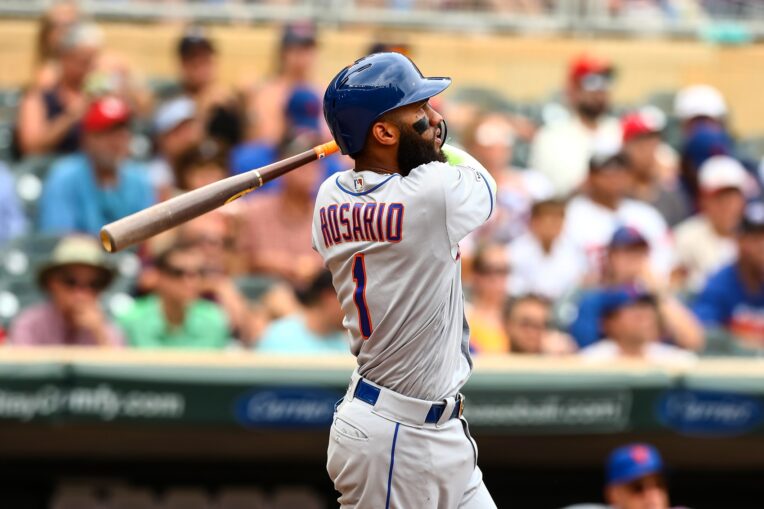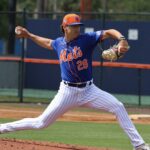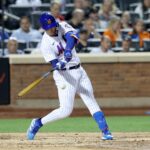
It wasn’t so long ago that Amed Rosario topped MLB.com’s Top-100 prospects list. While he hasn’t lived up to that prospect billing yet, he’s slowly shown improvement.
Production-wise, the second half of the 2019 season was his best stretch as a major leaguer. Over a three-month span, the 24-year-old infielder hit at .319/.351/.453 clip, contributing 23 extra-base hits, resulting in 114 wRC+. In the eyes of Statcast’s new infield OAA metric, his defense also shone, resulting in +3 OAA.
Looking at the underlying numbers, there are reasons to not be entirely convinced Rosario will continue that production into 2020. Yes, his exit velocity and overall batting line increased, but there’s also a boatload of other metrics that are concerning about the shortstop going into 2020.
Rosario’s second-half line came with a .363 BABIP, seventh highest in the majors over that time frame. Additionally, his ground-ball rate rose to 50.1% percent. While it’s plausible that his 94th-percentile speed could help offset the high ground-ball rate, his quickness doesn’t justify a .050 BABIP increase.
To put it into perspective how difficult it is to succeed with a high ground-ball rate, only six qualified hitters finished the 2019 campaign with a wRC+ over 100 and a ground-ball rate exceeding 50%.
Hitting ground-balls five percent more of the time corresponded to a five percent drop in Rosario’s fly-ball rate. Hitting more fly-balls has a clear benefit for the righty; his .371 xwOBA on flyballs in 2019 was significantly higher than his .257 xwOBA on grounders.
His 2019 second-half GB/FB rate was 1.91, which finished 17th out of hitters with 200 post-All-Star plate appearances. Only two hitters, Wilson Ramos and Tommy Pham, topped that mark in 2019 and finished with a wRC+ over 100, another trend that doesn’t bode well for Rosario.
Equally concerning was Rosario’s paltry second-half 4.0% walk rate and 39.5% chase rate. Swinging at pitches off the plate isn’t a new issue for Rosario; he’s struggled with that in both his minor and major league tenure.
Hacking at more pitches outside the strike zone in the second-half led to Rosario making worse contact.
His soft-contact percentage increased by four percent, which was at the expense of his hard-hit percentage rate, never a good trend you want to see from a hitter. By swinging at such pitches, he gave himself a worse chance to increase his production level.
Taking a look at Rosario’s career 41 barrels, 36 of them occurred on pitches inside the strike zone. Clearly, he benefits from swinging at more pitches inside the strike zone, not the opposite. Looking at his second-half barrel production, eight out of his 11 barrels took place on pitches inside the strike zone.
There were some more troubling factors for Rosie. His power dropped out, as he smacked six homers in the second half, compared to nine in the first half. Correspondingly, his ISO fell 21 points. In addition, his average fly-ball distance decreased by seven feet. All of that spells trouble for a hitter that’s done the majority of his damage on fly-balls throughout his career.
Swinging at more difficult pitches to hit isn’t the best ingredient for success. In Rosario’s case, his success might have had more to do with fluke luck than learning how to successfully attack pitches out of the strike zone.
As a Mets fan, I surely hope that Rosario can build upon his second-half production, but after looking more into it, there are reasons to be a little bit skeptical that the latter half of the 2019 season wasn’t anything more than BABIP-fueled luck.
















